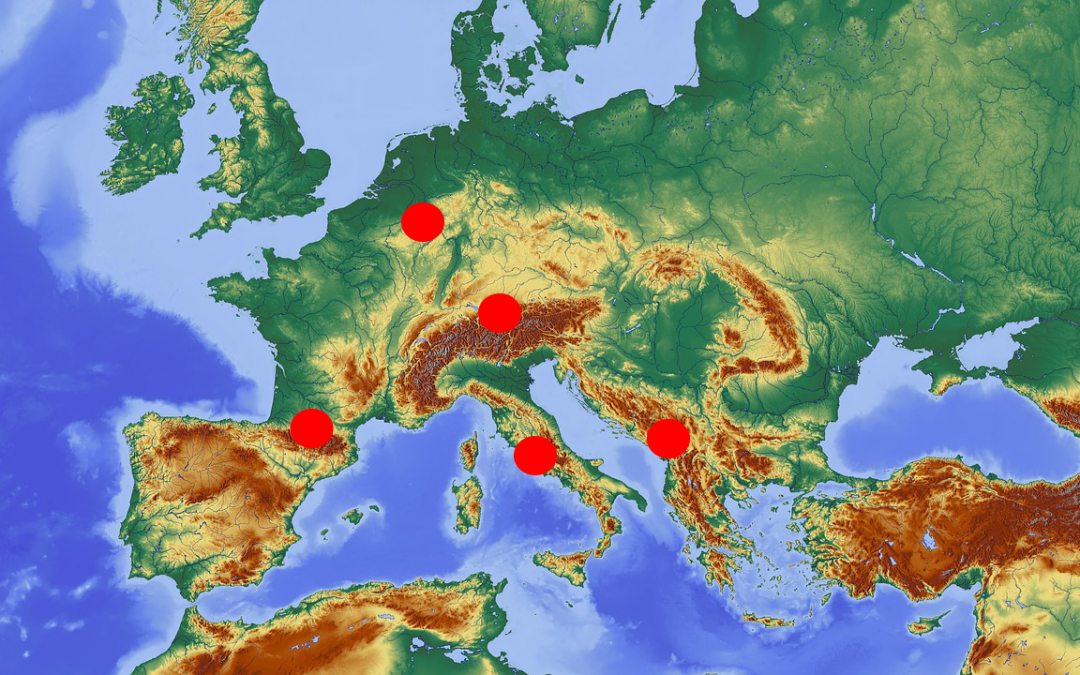Europe is a relatively small continent, compared to Asia and Africa. Fitting of this, some of the smallest countries in all of the world call it home. In this article we will look at the very smallest countries in Europe – from ancient city states that offer a gateway to a lost world, to young and unstable Balkan nations.
10: Montenegro

Montenegro literally means “Black Mountains”. It was named after a mountain within Montenegro covered in thick woodland that Venetian travelers encountered. Most people don’t even know Montenegro exists, partly because she is such a young country – only gaining independence in 2006. This arguably makes it the youngest nation in all of Europe. Adding to that, people outside of the Balkans tend to know very little about it’s home nations. But also because Montenegro is very small, at just 13,800 square kilometers. Montenegro is tiny in population as well as size, being home to just 680 thousand people.
Despite the seeming insignificance of this tiny European nation, Montenegro is both important strategically and interesting. More than 80 percent of her land is mountainous, meaning little can be done with it that will bring economic benefit. But these mountainous regions tend to be incredibly beautiful, as do the unspoiled coastal areas of Montenegro. For this reason the government has been pushing it’s tourism industry as much as they can. They have little resources and produce little food, so that’s probably wise. Despite Montenegro being among the smallest countries in Europe… it is the second tallest nation in the world. Seriously, Montenegrans are really tall.
9: Kosovo

Some people don’t consider Kosovo to be a real country as Serbia still claims it to be their territory, but the fact remains Serbia has no real control over Kosovo. It acts and is largely recognized as an independent state, making Kosovo one of the newest and smallest countries in Europe. Over 100 UN member states now recognize Kosovo and that number will almost certainly continue to increase in the near future. Gaining full independence in just 2008, the future of Kosovo was and is very uncertain.
At just under 11 thousand square kilometers, Kosovo is a tiny and landlocked state of little real importance. Their economy is virtually non existent, and it is possibly the poorest country in Europe. Some studies attribute a 60 percent youth employment rate to Kosovo. With many other statistics just as troubling as this, Kosovo’s future doesn’t look all bright. Still, as this country gains more and more recognition, she becomes further integrated into the European community. I do not know what the future holds for this tiny landlocked nation. But I am very interested to find out.
8: Cyprus

Cyprus is in a very difficult place, being an island divided up between three different states… in theory at least. In the north you have Northern Cyprus, a rogue state propped up by the Turkish military. Turkey is the only nation to recognize Northern Cyprus as a real country. The international community sees it as simply being a part of the Republic of Cyprus, even if it de facto operates as a separate state. It’s been this way since the late 1970s thanks to a series of bizarre political and military disputes between Cyprus Greece and Turkey. Strangest of all, the capital city of Cyprus is split between the two administrations.
One of the strange implications of this is that the capital has no airport. So it’s a good thing Cyprus is one of the smallest countries in Europe because it means the trip from any airport to the capital is quite short. You see, Cyprus has been forced to keep on and operate as best it can despite the political chaos. Being home to 1.2 million people, Cyprus is small in every sense. Regarding land area she is just 9,250 square kilometers, including the land of Northern Cyprus. I don’t regard Northern Cyprus as an independent country as only one other country recognizes it as so.
7: Luxembourg

At a big drop off from the last entry in this list, Luxembourg covers just 2,500 square kilometers of North-West Europe. It’s population is slightly smaller than that of Montenegro. But unlike many of the smallest countries in Europe Luxembourg is actually incredibly wealthy. In fact, Luxembourg has the highest per capita income in the world by some measures. Many multinational corporations house their European headquarters in Luxembourg. These include Skype, Fedex, and Pepsi – which helps keep their citizenry wealthy. The government has attracted them with a complex system of tax arrangements, that usually just mean they don’t tax big corporations much at all. Some would call that corrupt but who am I to judge.
For some reason 17 percent of Luxembourg’s population is Portuguese… I’m really not sure why though. Luxembourg’s head of state is actually a Grand Duke, being the last Grand Duchy in existence. Grand Duchies were a common form of government in the middle ages, but most are long gone. Luxembourg avoided this fate by maintaining a close relationship with The Netherlands, which prevented Germany from absorbing it into her confederation.
6: Andorra

At an even bigger drop off, Andorra covers just 468 square kilometers. Andorra is so small it barely shows up on the map of Europe, being sandwiched between France and Spain. It doesn’t even have an airport. The only way to get there is to fly to somewhere in France or Spain, and then travel to Andorra directly via road. The entire country is basically just a small valley with a handful of settlements. Andorra’s economy survives on tourism, as the valley is beautiful and home to mountains that house a ski resort. No doubt many tourists come here just to see what a country this small is like. You could call such people travel hipsters, I suppose.
It’s capital city is the highest in Europe, at over 3,300 feet. This is because Andorra is located within a mountain range known as The Pyrenees. This makes Andorra different from it’s neighbors, as the Pyrenees is the traditional divide between France and Spain. Andorra’s political system is especially interesting and unique, being a co-principality. Andorra has two prince’s, who are it’s head of state. The first is the president of France, and changes with the French presidential office. The other prince is the current bishop of Urgell. This agreement was first made in the year 1278, between the then king of France and the then Bishop of Urgell. To this day the agreement continues.
5: Malta
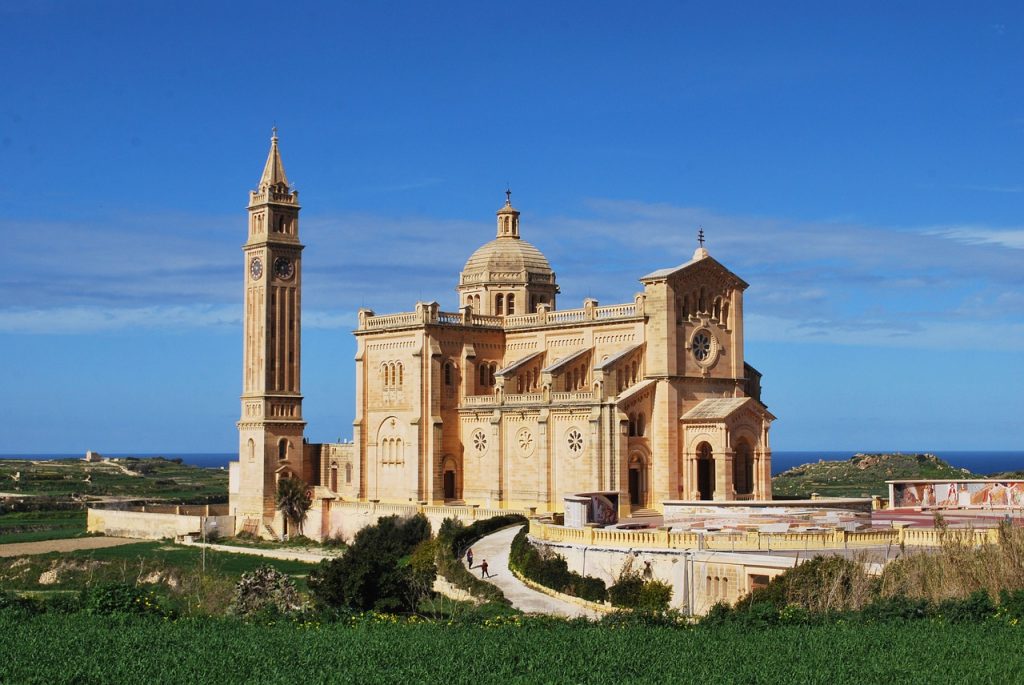
Malta, a tiny island in the Mediterranean. Despite consisting of many different islands, the total land area of Malta is just 316 square kilometers. With that in mind it’s no surprise Malta has only one international airport. This causes many people to sail there from Italy or North Africa. Like a lot of the smallest countries in Europe, Malta attracts business and wealthy individuals with low tax schemes. In fact she has literally no property tax.
It is an absolutely beautiful place, being relatively warm all year long, and home to unique and unspoiled natural beauty. Maltese is the ethnic group who call this tiny country home, with their own language. Maltese is kind of like a mixture of Arabic, French, Italian, and English. Unsurprisingly, many of it’s citizens are trilingual. Like almost all of the smallest countries in Europe, Malta is relatively unimportant on the world stage, opting for diplomatic neutrality in most respects. Here’s where it gets wild. Compared to the final four entries on this list, Malta actually looks rather large.
4: Liechtenstein
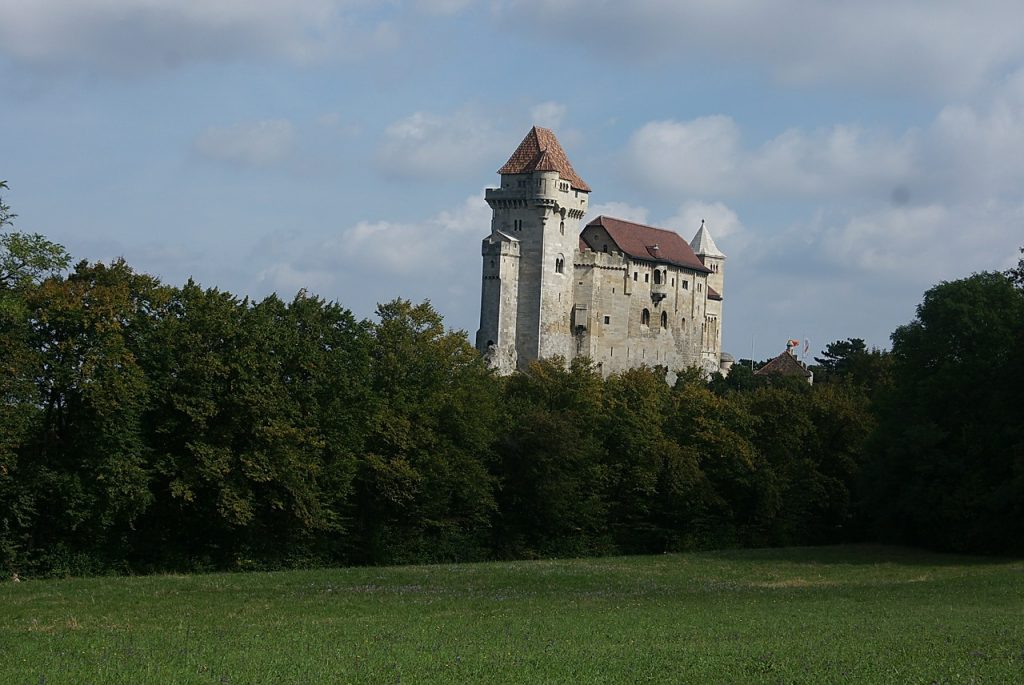
Stuck between Austria and Switzerland, Liechtenstein is one of the only doubly-landlocked countries in the world. That’s just one of the many elements that makes Liechtenstein such an incredible place. Covering only 162 square kilometers, Liechtenstein is absolutely tiny. It’s amazing Liechtenstein even exists today, with it’s largest settlement having a population of just 5,700 people. For obvious reasons Liechtenstein has no airport, meaning it can be difficult to get there. Most visitors take a bus. Liechtenstein is a beautiful little place, known for it’s variety of castles and landscapes. Because of it’s position, everything from mountainous areas to flat lands can be found in Liechtenstein.
It is a principality, with the prince of Liechtenstein being it’s head of state. I don’t know why all the smallest countries in Europe seem to be some kind of monarchy. It’s weird. They’re all just so weird. Like Luxembourg she has one of the highest per capita incomes in the world. Also like Luxembourg, she has managed to somehow not be absorbed into Germany or Austria. In fact, Liechtenstein and Luxembourg are arguably the last two remaining states from the Holy Roman Empire that still exist in more or less the same form.
3: San Marino
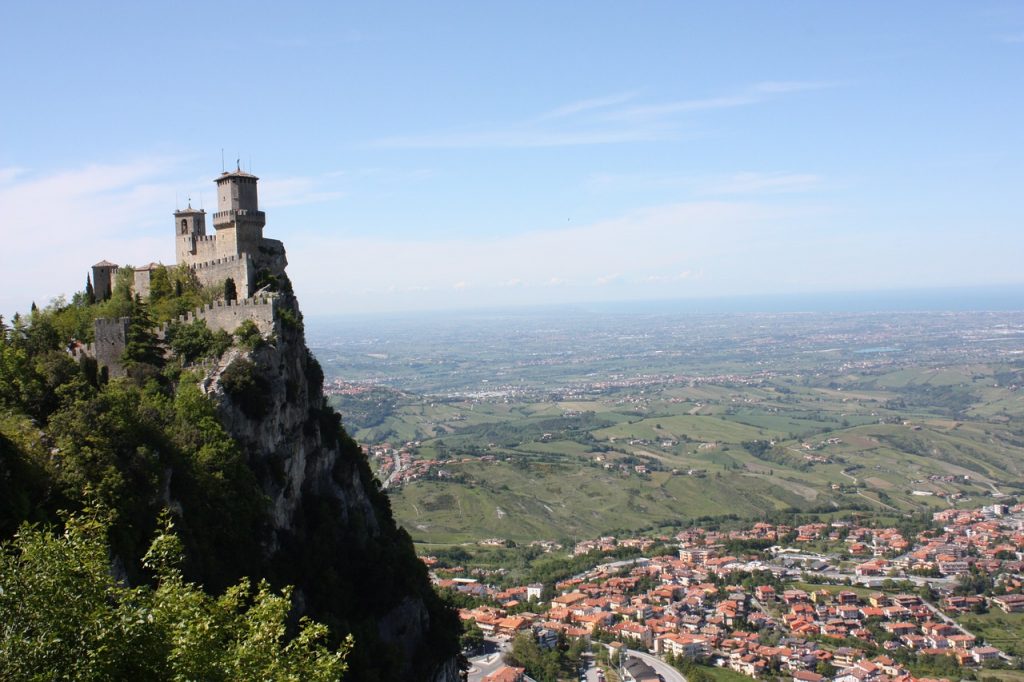
With a total GDP of 1.6 billion dollars, San Marino might seem surprisingly poor. But then you realize it’s population is only 33 thousand and it starts to seem surprisingly wealthy. This micro state is surrounded entirely by Italy, just as Vatican city is. She is a remnant of a time when Italy was not one unified state, but a collection of independent states of varying sizes. Many were individual city states like Florence and Bologna. Among them was San Marino. The unification of Italy was a slow process that really began during the Napoleonic Wars, with Northern Italy being conquered and reorganized by Napoleon.
But for some reason Napoleon chose not to invade San Marino. Also for some unclear reason, the sovereignty of San Marino has largely been respected by other Italian states too. It’s unclear how but Napoleon actually grew to love San Marino, which might be a clue as to why other people have since posed no threat to it. San Marino is just lovable. It’s harmless, it’s so small. San Marino is not a threat to anyone, no state has ever needed to invade it. Perhaps this simple explanation is why San Marino still exists.
2: Monaco
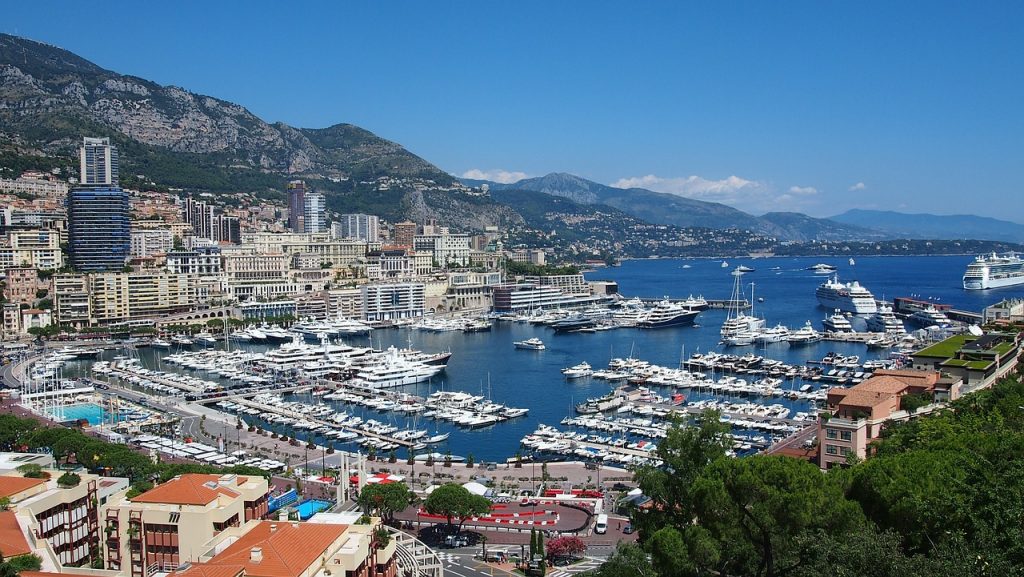
This isn’t just one of the smallest countries in Europe – it’s the second smallest country in all of the world. At just 2.02 square kilometers, Monaco is ridiculous. Monaco is another tiny principality with a massive per capita income. Famous as the home of millionaires and billionaires, Monaco has literally no income tax. It also has very low corporate taxes, and all kinds of generous schemes to attract the wealthy. Monaco is seen as little more than a playground for the wealthy, as a banking and gambling center. Around 30 percent of the population of Monaco are known to be millionaires. This has seen real estate prices in Monaco rise to ridiculous levels. It really is a silly place. Strangely, Monaco isn’t even as small as it used to be. Over the last decade or so it’s land area has increased by 20 percent through land reclamation. Similar methods have been used by other tiny nations like Bahrain. But they’re still super small.
1: Vatican City
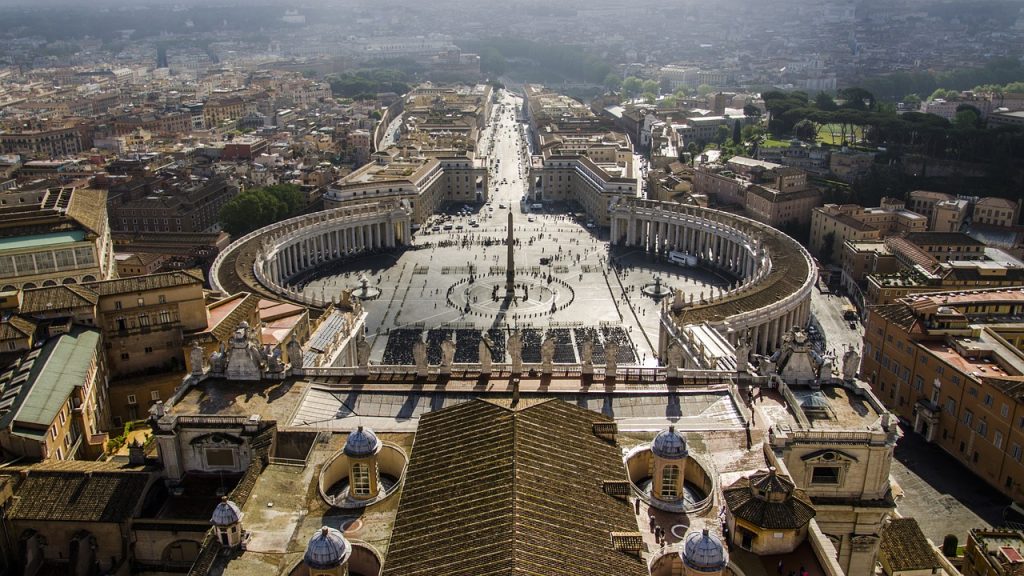
Vatican City is amazingly small. It’s a city state but not even a big city, at 0.44 square kilometers in total. When Italy was unified there was much debate over whether Vatican City should be included or not. Then in 1929, Mussolini agreed that it will be an independent country on the condition that the church would not involve itself in Italian politics. Since then, Vatican city has been an independent state, run by the pope. With the pope being considered a monarch, Vatican city is the last absolute monarchy in Europe. It’s almost certain that Vatican city would not be a country today if not for it being the central nucleus of the Catholic Church. It’s safe to say that since it’s population is only around one thousand.
Smallest Countries In
Africa

